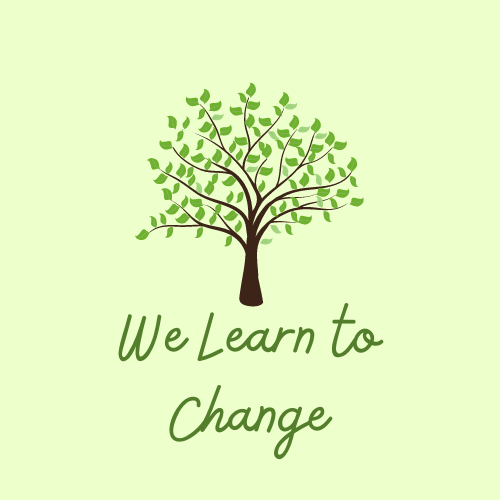POINT is another acronym for unit and lesson planning. You know, we needed one more to beef up the alphabet soup of educational jargon.
In a previous blog post about practical considerations for teaching and learning during the COVID-19 crisis, I mentioned yet another acronym for teachers: POINT. We all need another acronym for teaching and learning, right?
I know that answer as well as anyone, but please hear me out.
POINT stands for
- Purpose (Goals)
- Objectives (SWBAT/Standards)
- Indicators of Learning (Diagnostic, Formative, Summative)
- Negotiables for Differentiation
- Tasks/Steps
A Little Background: UbD and HyperDocs
I have been inspired and motivated by Understanding by Design (UbD) for a long time. A site called TeachThought features a number of articles on UbD, and its founder, Terry Heick had many conversations with Grant Wiggins before he, sadly, passed away. (ASCD also offers numerous texts on the subject.) My main takeaway from UbD is that we need to know WHY we are teaching something before we dig into the planning. If our purpose and goals are not aligned to meaningful learning, then what’s the point?
More recently, I have been influenced by a method tied to virtual and online learning: HyperDocs. Their virtual lesson template library is intriguing. You can the library here. Their lesson plan templates, when complete, are “meant for students to use.” They guide the students through the process, one step at a time.
A basic template includes the following checkpoints.
- Engage
- Explore
- Explain
- Apply
- Share
- Reflect
- Extend
I was drawn to the “Explain” aspect immediately. Do we spend enough time explaining why students are doing something? Do we keep the standards and big ideas mysterious, or do we share them? Can we adequately address why the lesson is important, WIIFM (What’s In It For Me?) questions, and how the outcome of the lesson is going to make their future explorations more meaningful and fulfilling?
How to Use POINT
POINT is actually a cyclical process, in my opinion. For example, a purpose could come to mind immediately and then as I work on the other checkpoints, my backward interrogation could lead me to believe that my purpose is “meh.” When I created the video linked to this post, I added arrows that point backward and forward. That is because I feel it important to interrogate (love that word) each checkpoint backward and forward to ensure that everything is in alignment. If we are to teach with intention and ask our students to learn with intention, then I think it’s important to ensure the lesson’s intentions are excellent and that everything the students will do harkens back to the Purpose.
An Example
Suppose I am teaching a literature unit called “Eye-Opening Short Stories.” I decide that the purpose of the unit is to examine characters within the context of a moment in which they make a big discovery about themselves, about life, and about living within the human community.
By the end of the unit, students should be able to recognize the textual details provided by the author to indicate character, contrasts with other characters, and that character’s values and beliefs. Those details could be conveyed through the narrator, dialogue, etc. How do we know that the character has made a big discovery? Where in the text do we find that out? What are the effects on the structure or plot? Why is that important? What was the author’s purpose?
Now I have to interrogate my original purpose against the SWBAT items. I find the purpose lacking. I can ask myself, “So what?” In other words: “What’s the point?”
I can add something to the purpose, to make it more relevant to the students’ lives. Something like, “As teenagers, students are in the throes of developing their worldview. Mentor texts such as these can lead to an exploration of events within their own lives (prior knowledge) that have led to growth and maturity (new perspective). We can make connections between the chosen texts and their own experiences. Students can take away from this exploration methods and techniques for making future discoveries about themselves.”
I’m “spitballing” here on purpose. I want to show you my thought process.
This examination of the first two checkpoints informs the next checkpoint: Indicators of Learning. How do we know the students have learned something? What diagnostics should we employ before learning? What formative assessments should we perform during learning? What does a summative assessment look like?
Next, how do we differentiate learning so that each student benefits from the lessons in the unit? Some students will be more prepared for discussion and writing than others. What do we do to support those who need that extra help; what scaffolding do we use? When do we release some responsibility to them?
At this point, we should interrogate the indicators and negotiables against the purpose and the objectives, right? Are they really going to demonstrate learning as it relates to the purpose of the unit? Are we just doing assessments to do them or do they align? Are our negotiables truly going to help students progress and learn?
The last step of the process, in my opinion, is to examine the tasks and steps involved. We have decided our purpose and our objectives. We have assessments in mind and negotiables. Now, how do we execute all that through specific steps? After deciding that, we again need to interrogate (still love that word). That’s why this is cyclical. Do the tasks and steps align with the purpose? Do the tasks and steps reveal something to add to the purpose and objectives? Do we need to tweak our assessment ideas? Will the differentiation work for OUR students? Finally, do our materials work?
What Do You Think?
Thank you for reading!
